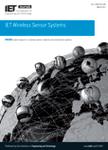版权所有:内蒙古大学图书馆 技术提供:维普资讯• 智图
内蒙古自治区呼和浩特市赛罕区大学西街235号 邮编: 010021

作者机构:Appl Sci Private Univ Fac Informat Technol Amman 11931 Jordan Queens Univ Sch Comp Telecommun Res Lab Kingston ON K7L 2N8 Canada
出 版 物:《IET WIRELESS SENSOR SYSTEMS》 (IET Wirel. Sens. Syst.)
年 卷 期:2018年第8卷第6期
页 面:323-339页
核心收录:
学科分类:0810[工学-信息与通信工程] 0808[工学-电气工程] 08[工学]
基 金:Applied Science Private University in Amman Jordan
主 题:operating systems (computers) Internet of Things public domain software smart cities smart sensory platforms operating system support low-end devices IoT environment simulator support specific IoT devices IoT open-source OSs Internet of Things health informatics high-end devices programming model memory management scheduling multimedia nonfunctional requirements functional requirements networking protocol support power consumption
摘 要:The Internet of things ( IoT) has attracted a great deal of research and industry attention recently and is envisaged to support diverse emerging domains including smart cities, health informatics, and smart sensory platforms. Operating system (OS) support for IoT plays a pivotal role in developing scalable and interoperable applications that are reliable and efficient. IoT is implemented by both high-end and low-end devices that require OSs. Recently, the authors have witnessed a diversity of OSs emerging into the IoT environment to facilitate IoT deployments and developments. In this study, they present a comprehensive overview of the common and existing open-source OSs for IoT. Each OS is described in detail based on a set of designing and developmental aspects that they established. These aspects include architecture and kernel, programming model, scheduling, memory management, networking protocols support, simulator support, security, power consumption, and support for multimedia. They present a taxonomy of the current IoT open-source OSs. The objective of this survey is to provide a well structured guide to developers and researchers to determine the most appropriate OS for each specific IoT devices/applications based on their functional and non-functional requirements. They remark that this is the first such tutorial style paper on IoT OSs.